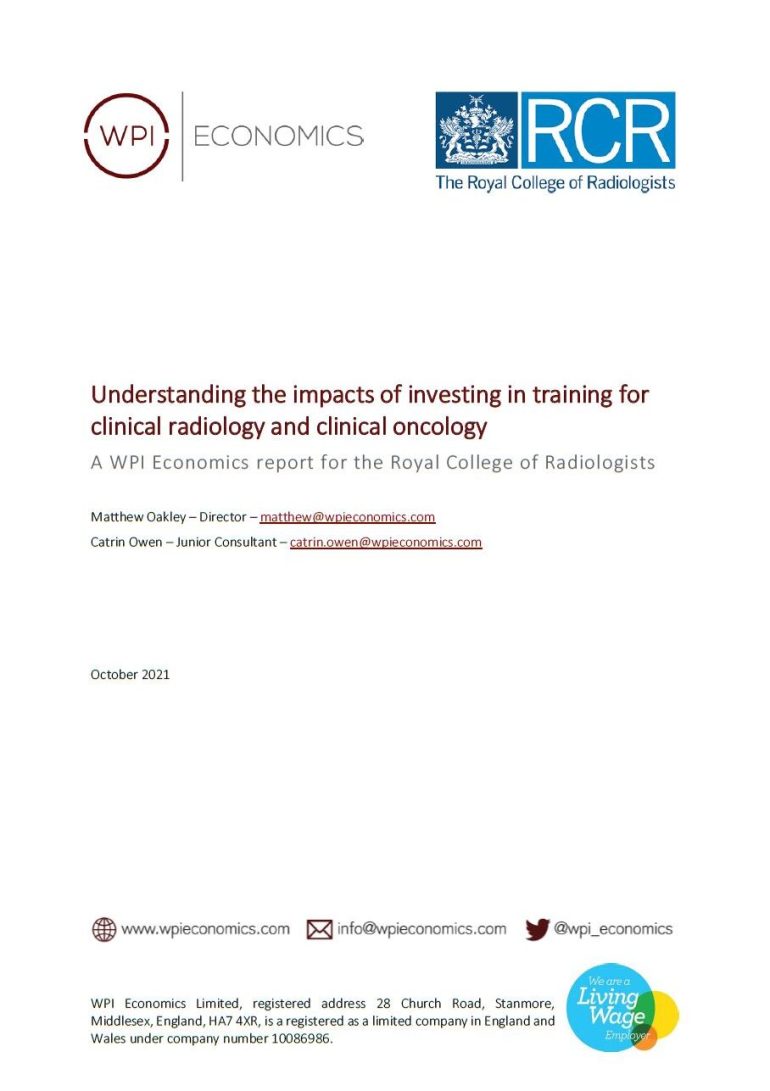
Demand for cancer services has never been higher. 1 in 2 people in the UK born after 1960 will have cancer at some point during their lifetime. Radiotherapy in particular is one of the most effective treatments for some cancers, with around 40% of patients who are cured from their cancer receiving radiotherapy as part of their treatment. Clinical radiologists play a vital role in the diagnosis of stroke, trauma and deep vein thrombosis as well as cancer, while clinical oncologists (CO) play a critical role in managing the care of cancer patients as well as leading multidisciplinary teams, delivering non-surgical cancer treatment and training the future workforce.
This report for the Royal College of Radiologists outlines the existing scale of shortages in the workforce and identifies the main costs that these shortages create. It then explores different ways in which the gap between supply and demand could be filled. It shows that recruitment from abroad and improved working practices (e.g. the introduction of AI and an improved skills mix) will not get close to meeting needs. As such, it confirms the importance of a sustainable and long-term increase in training numbers in England and shows that overall, compared to other strategies, this would lead to direct cost savings for the NHS.
To read the report, click here.
